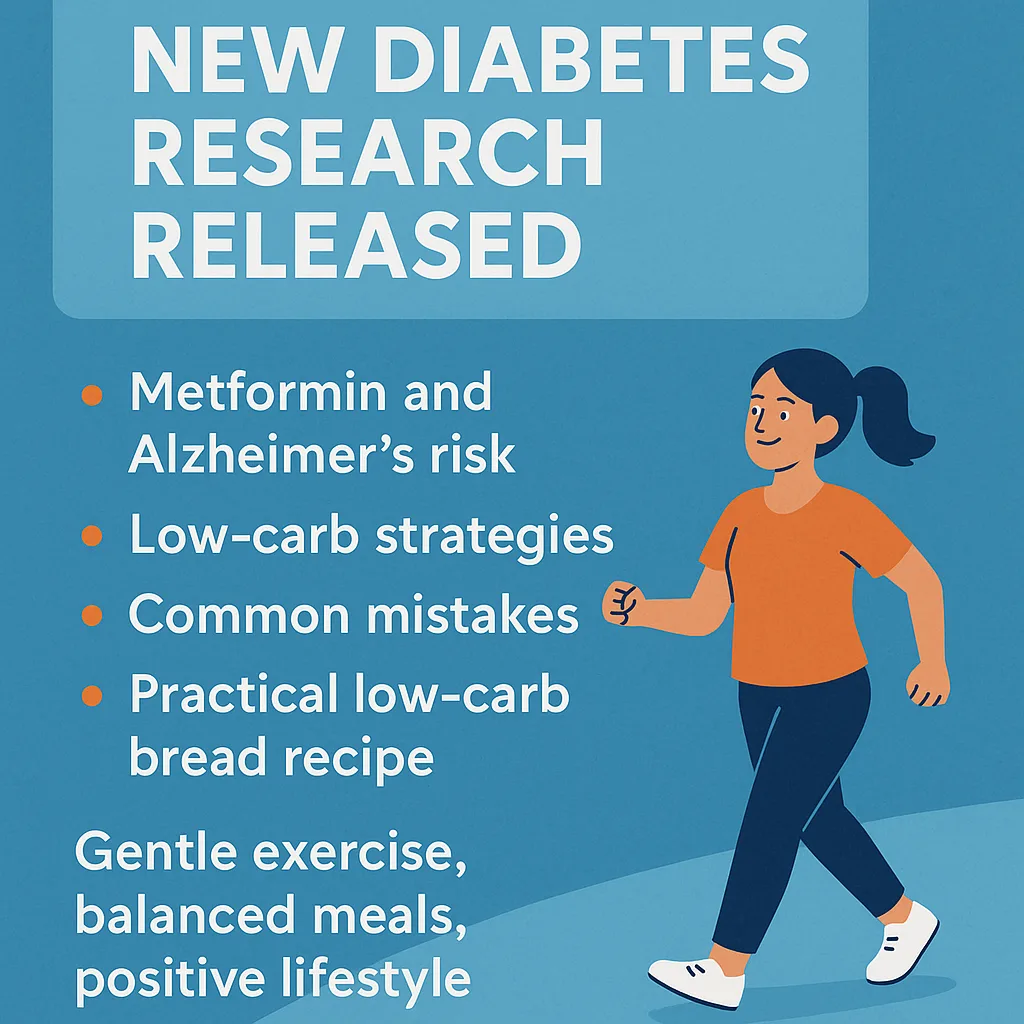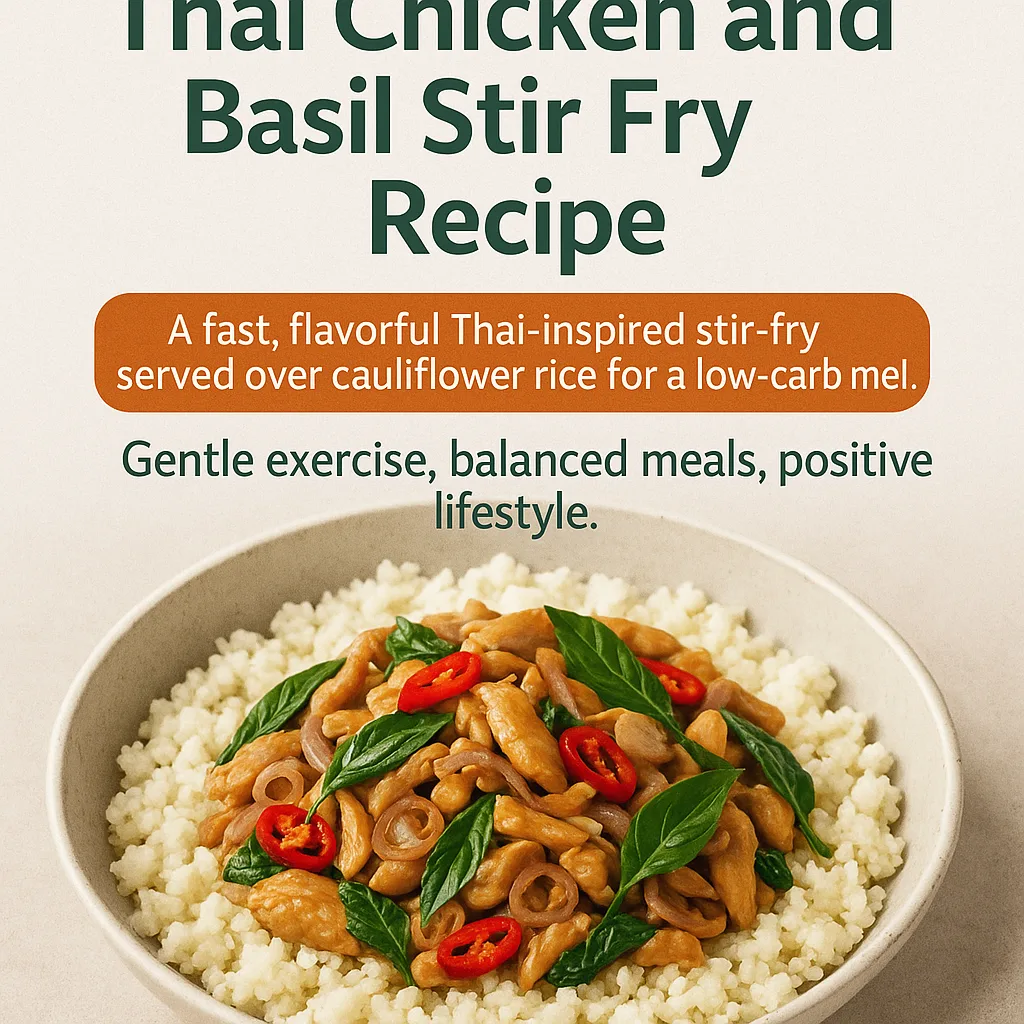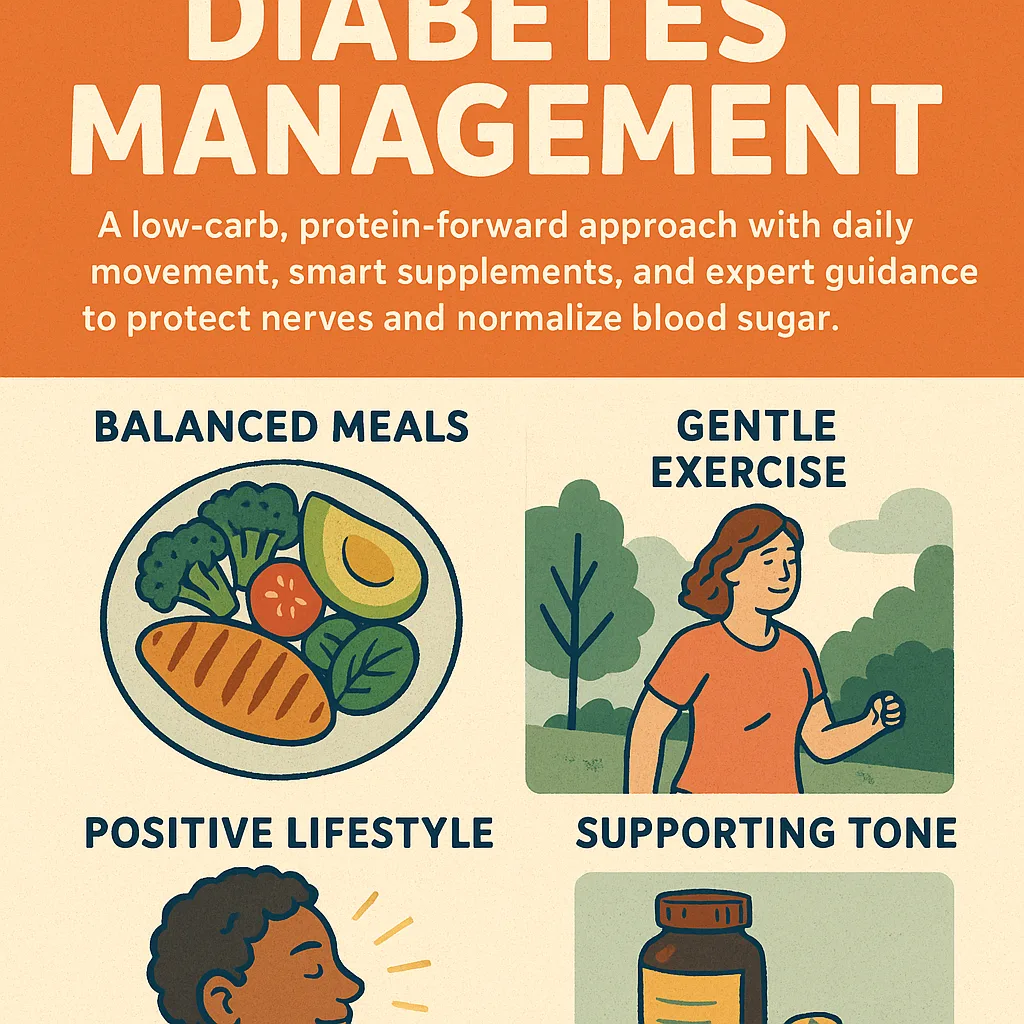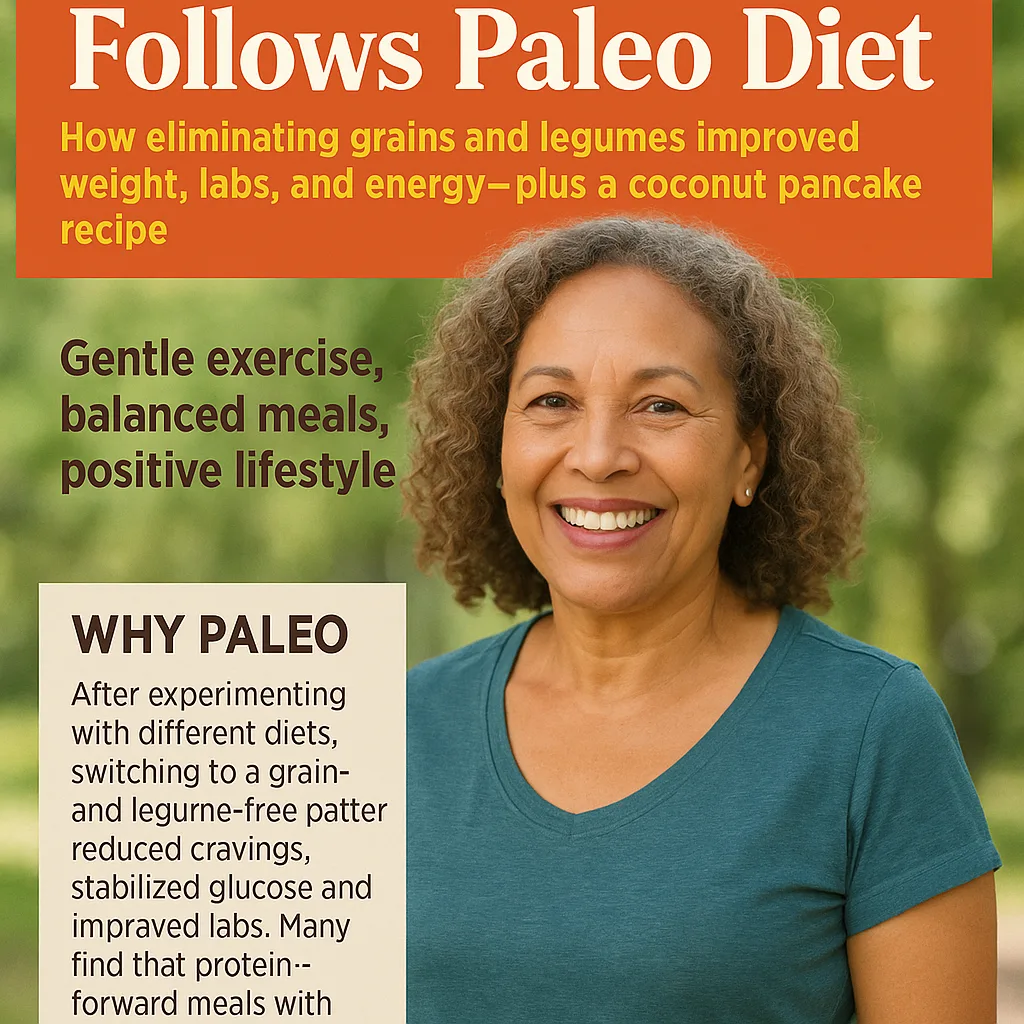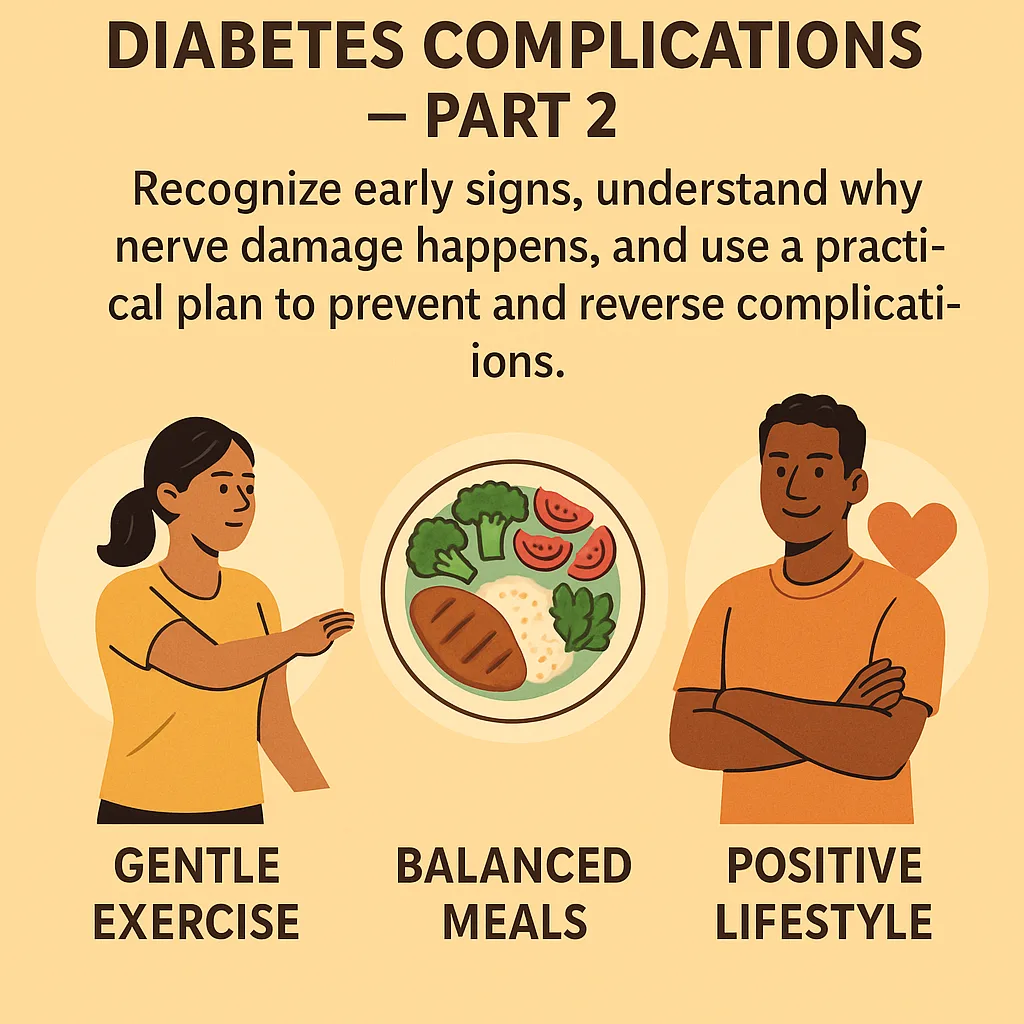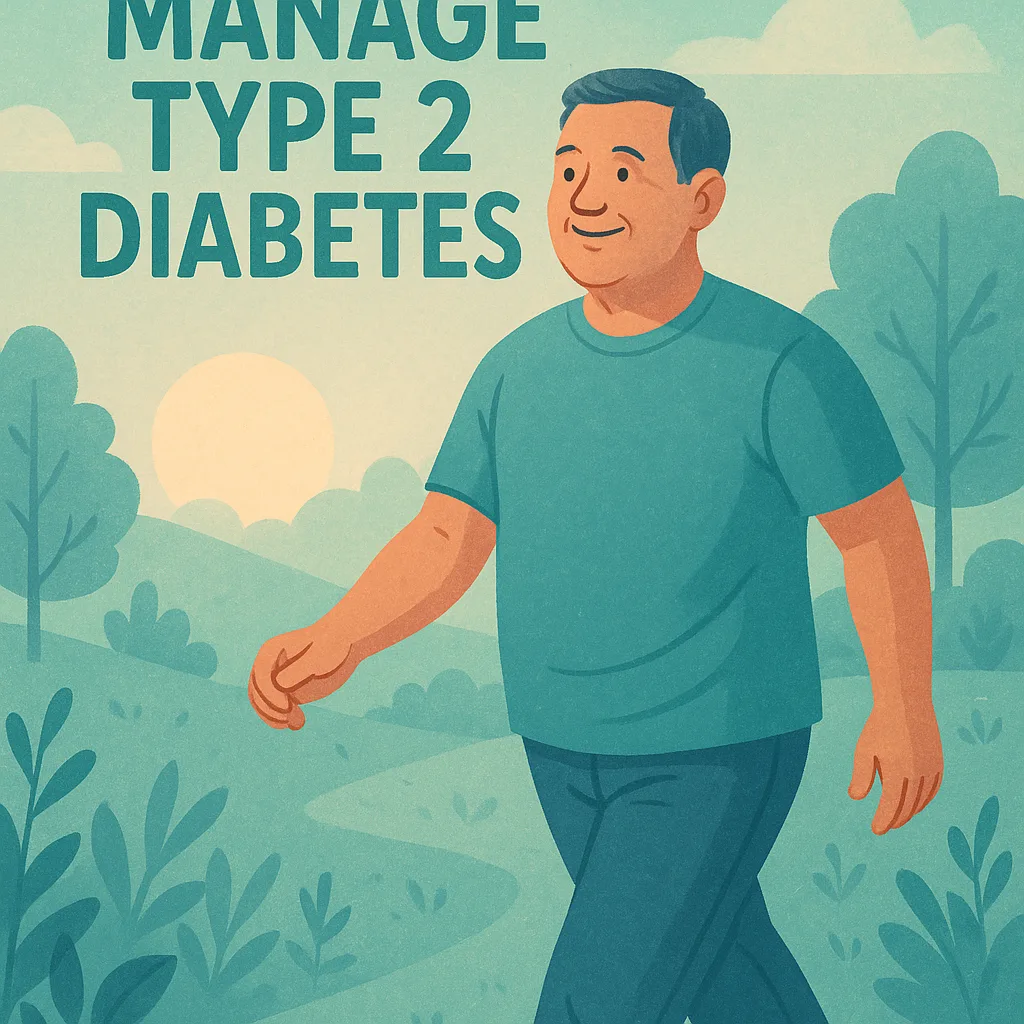Metformin and brain health
A multi‑year observational analysis in 2013 reported that people with type 2 diabetes taking metformin appeared to have lower rates of Alzheimer’s disease compared with those on certain sulfonylureas. While observational data can’t prove causation, the signal is encouraging. The takeaway is not that a pill replaces lifestyle. Rather, medication plus smart nutrition and activity can complement each other to protect the brain.
Low‑carb diets for glycemic control
Clinicians like Dr. Richard Bernstein have long advocated carbohydrate restriction to normalize blood sugars and improve neuropathy symptoms. Lower carbohydrate intake reduces the glucose load per meal, typically leading to flatter post‑prandial curves, fewer hypoglycemic episodes from over‑dosing insulin or secretagogues, and improved A1C.
Practical guidelines
- Choose protein first: eggs, meat, fish, tofu.
- Fill the plate with non‑starchy vegetables: leafy greens, broccoli, peppers.
- Use whole‑food fats for flavor: olive oil, avocado, nuts.
- Track how you respond; some tolerate more carbs at dinner than breakfast.
Five common mistakes
- Drinking calories in coffee drinks, juices, and “healthy” smoothies.
- Grazing all day, never allowing insulin to drop between meals.
- Relying on ultra‑processed “low‑carb” products with hidden starches.
- Ignoring sleep and stress, both of which raise glucose.
- Not measuring; guessing replaces testing, and surprises follow.
Low‑carb bread, done right
Store‑bought “low‑carb” breads often rely on fibers, starches, and additives that don’t sit well with everyone. A simple home bake gives you control.
Basic almond‑flour loaf
- 1½ cups almond flour
- ½ teaspoon baking powder
- ¼ teaspoon sea salt
- 5 eggs, separated
Preheat the oven to 350°F. Line a small loaf pan. Whisk almond flour, baking powder, and salt. In one bowl beat yolks until creamy; in another, whip whites to soft peaks. Fold yolks into the dry mix, then gently fold in the whites to keep volume. Transfer to the pan and bake about 35 minutes, until a toothpick comes out clean. Cool fully before slicing.
Serve with butter, sugar‑free jam, or as the base for open‑faced sandwiches. Track your glucose the first few times to understand your personal response.
Putting research into action
- Discuss medication options with your clinician; never change a prescription without guidance.
- Set a carb range per meal and build around it.
- Combine strength training with walking to improve insulin sensitivity.
- Check fasting and 2‑hour post‑meal glucose; look for consistent patterns over single spikes.
Looking ahead
Ongoing trials continue to explore nutrition patterns, exercise timing, and adjuncts like CGMs for people not on insulin. The core principles remain: eat foods that love you back, move most days, sleep, and measure to learn.
